Traditional urban design education often relies on theoretical lectures and isolated projects, which can fall short of preparing students for the complexities of creating sustainable, inclusive cities. Recognizing this gap, Dr. Nancy M. Abdel-Moneim (Associate Professor at the Arab Academy for Science, Technology & Maritime Transport, Smart Village Campus) and Dr. Mennatullah Hendawy (representing the Center for Advanced Internet Studies gGmbH, Germany) adopted game-based learning to bridge the divide between theory and practice in a postgraduate course at AASTMT, Smart Village Campus. This approach not only addressed sustainability but also redefined how urban design is taught at the postgraduate level.
The course outputs were five analog games
- Debatable Urbs
- Solve or Dare
- Puzzled Town
- City Spy
- CitySpace Conquest—each crafted to simulate real-world urban challenges.
Similarly, Ms. Vaishnavi Shankar (Lead at NIUA, India) introduced CLAP NOW, which, along with Debatable Urbs, was featured in the session titled ‘Urban Solutions Lab: Interactive Games for Climate-Resilient and Livable Cities‘ at the World Urban Forum 12 (WUF12), held on November 7 in Cairo, Egypt. The session engaged a diverse audience of urban planners, climate action advocates, and stakeholders, offering an innovative, game-based learning experience overseen by the panel, which included Mr. Sarath Babu M G (Lead at NIUA, India) and Ms. Deepshikha Sinha (Research Associate at NIUA, India).
These games created a simulated environment for debates, negotiations, and strategy co-creation, enabling participants to tackle real-world urban planning issues engagingly while reinforcing the core principles of game-based learning highlighted earlier. The activities emphasized the integration of climate considerations into urban development, offering practical solutions aligned with global sustainability goals. The session aimed to strengthen cross-sectoral dialogue and advance actionable strategies for resilient, inclusive, and sustainable cities.
The hands-on format provided attendees with theoretical knowledge and practical tools to implement sustainable solutions. Participants left the session with a deeper understanding of collaborative urban development strategies, empowering them to contribute effectively to creating livable and climate-resilient cities.
A key outcome of the session was its ability to immerse participants in experiential learning, transforming passive classroom settings into active problem-solving spaces. The interactive games fostered creativity, collaboration, and adaptability—skills essential for future urban designers and planners. Participants addressed complex urban issues in a safe environment for experimentation, encouraging deeper engagement, critical thinking, and a sense of shared responsibility for designing better cities. By simulating real-world challenges, the session deepened participants’ understanding of urban dynamics and encouraged innovative thinking.
The game-based approach of the session offers a compelling blueprint for integrating serious games into urban design education by addressing the gaps between theoretical knowledge and practical application. It ties back to the challenges of preparing students for complex urban environments and provides actionable solutions through immersive, collaborative learning experiences. By bridging theoretical knowledge and practical application, this approach equips students and professionals with the tools to address the evolving challenges of urban environments. The session demonstrated the transformative potential of game-based learning, equipping participants with actionable skills and inspiring them to envision and design more sustainable urban futures.
As urban complexities grow, initiatives like this are vital in preparing the next generation of designers and planners. The integration of play into education represents a forward-thinking approach to solving real-world challenges, ensuring that future cities are both resilient and inclusive.
Conference Images: Courtesy Author
Enhancing the role of Urban designer through serious games: Debatable Urb and Clap Now
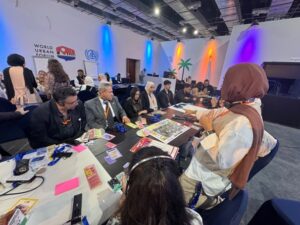
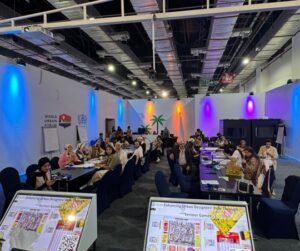
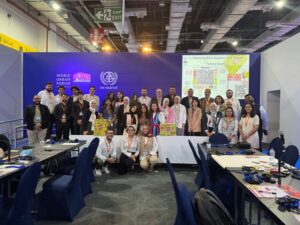
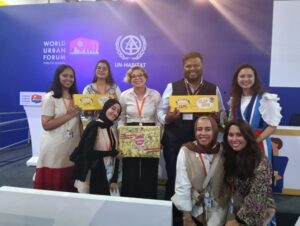
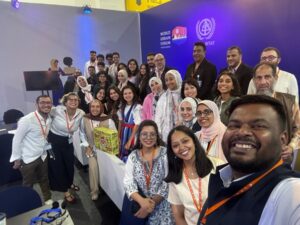
Author

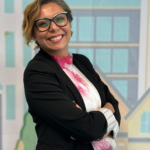
Nancy M. Abdel-Moneim is an Associate Professor and the Associate Dean of the College of Engineering and Technology. As an urban designer, her work bridges academia and practice with a focus on sustainable urbanism, blue-green restoration, and community-centered development. Her research delves into themes like messy urbanism, waterfront interactions, and alternative policies for unplanned areas in Egypt. Nancy’s projects often integrate advanced tools like augmented reality, AI, and serious games to enhance urban design education and community engagement. She is actively involved in the ARCHEO living lab, which leverages technology to document heritage sites and create virtual tours. Her work emphasizes just transitions and the societal impacts of urban interventions, including issues of gentrification and inclusivity. She combines theory and real-world application to address pressing global challenges as an innovative approach to urban design.
Connect with Authors:
![]() : Dr.-Ing. Mennatullah Hendawy
: Dr.-Ing. Mennatullah Hendawy